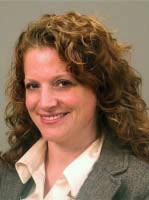View Content #17419
| Contentid | 17419 |
|---|---|
| Content Type | 5 |
| Title | Task-based Learning in the Classroom by Mandy Gettler, CASLS Associate Director |
| Body | What does task-based learning look like in the classroom? To find out, I talked with Brandee Mau, a German teacher at Campbell County High School in Wyoming who will be the Pacific Northwest candidate for the 2015 ACTFL Teacher of the Year competition. Brandee credits task-based learning with making language learning more meaningful to students.
In creating a task-based learning lesson, Brandee first looks at students' proficiency and clarifies what she expects students to be able to do. Then, she identifies a task that will give them the opportunity to practice in a meaningful way. The biggest challenge is keeping the tasks as authentic as possible while recognizing students' varying proficiency levels. Brandee finds self-evaluation truly valuable, especially for these types of units. "Grades aren't doing it," says Brandee. "They could care less if they get an A or a B or C." Brandee asks her students to complete self-evaluations during their task-based unit and a big-picture self-evaluation at the end. The evaluations she uses are very specific about language use and include, for example, "Did I use compound sentences?" Students also have to provide evidence and set their own goals for what they want to do next time. You can use the same self-assessment Brandee uses by reading the March 31 issue of InterCom. The self-assessment she developed will be the activity of the week. For higher-level students, Brandee uses a discussion forum and asks students to evaluate their own contributions for quality and quantity. The rewards of task-based learning are worth the challenge. "The biggest reward is the look on students' faces when they realize they've done it, when they realize what they've done and what they can do." |
| Source | CASLS |
| Inputdate | 2014-03-16 09:38:16 |
| Lastmodifieddate | 2014-03-17 03:06:46 |
| Expdate | Not set |
| Publishdate | 2014-03-17 02:15:01 |
| Displaydate | 2014-03-17 00:00:00 |
| Active | 1 |
| Emailed | 1 |
| Isarchived | 0 |
 "Most of what I do is task based," Brandee shares. "We select a theme, and then students determine what angle they want to take. They get to choose how they want to talk about the theme, and I ask students to research something, identify their point of view, and support it."
"Most of what I do is task based," Brandee shares. "We select a theme, and then students determine what angle they want to take. They get to choose how they want to talk about the theme, and I ask students to research something, identify their point of view, and support it."